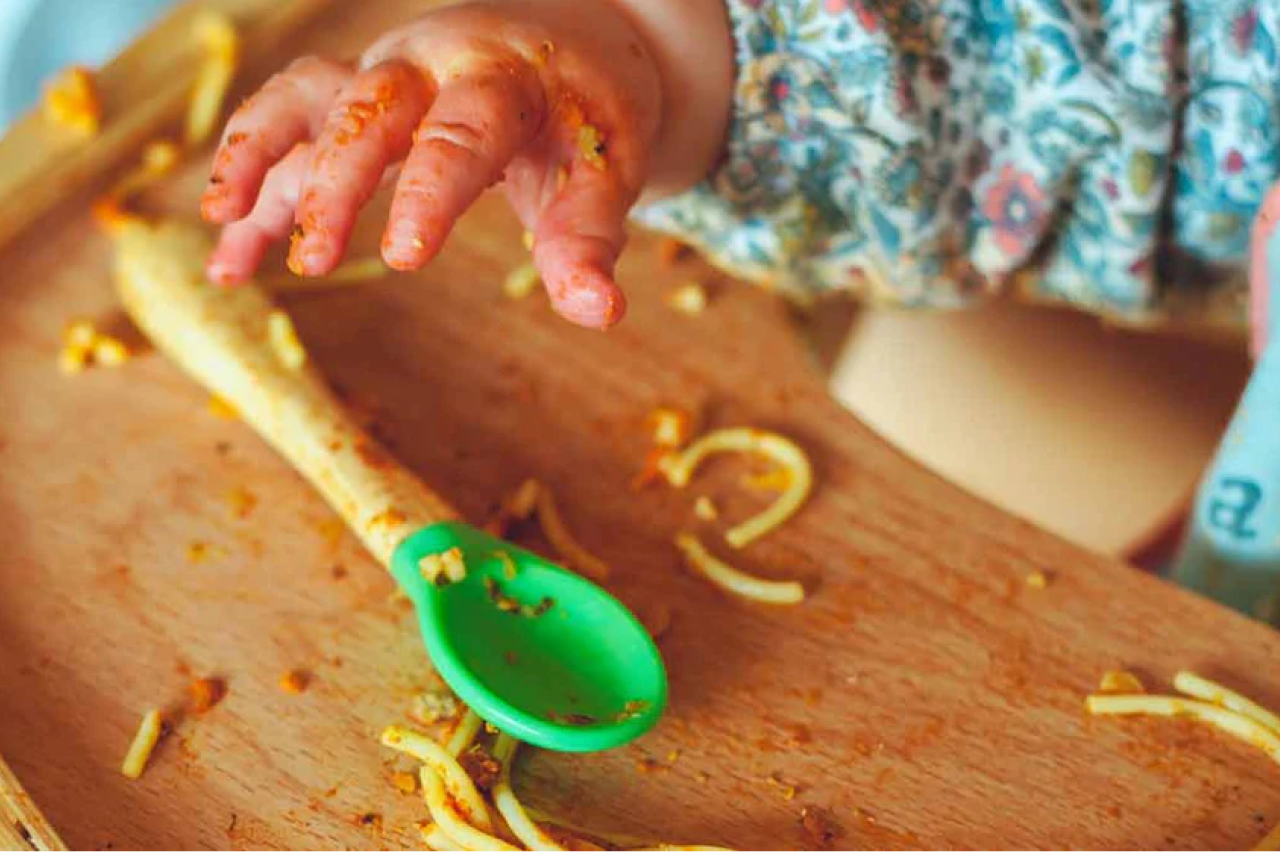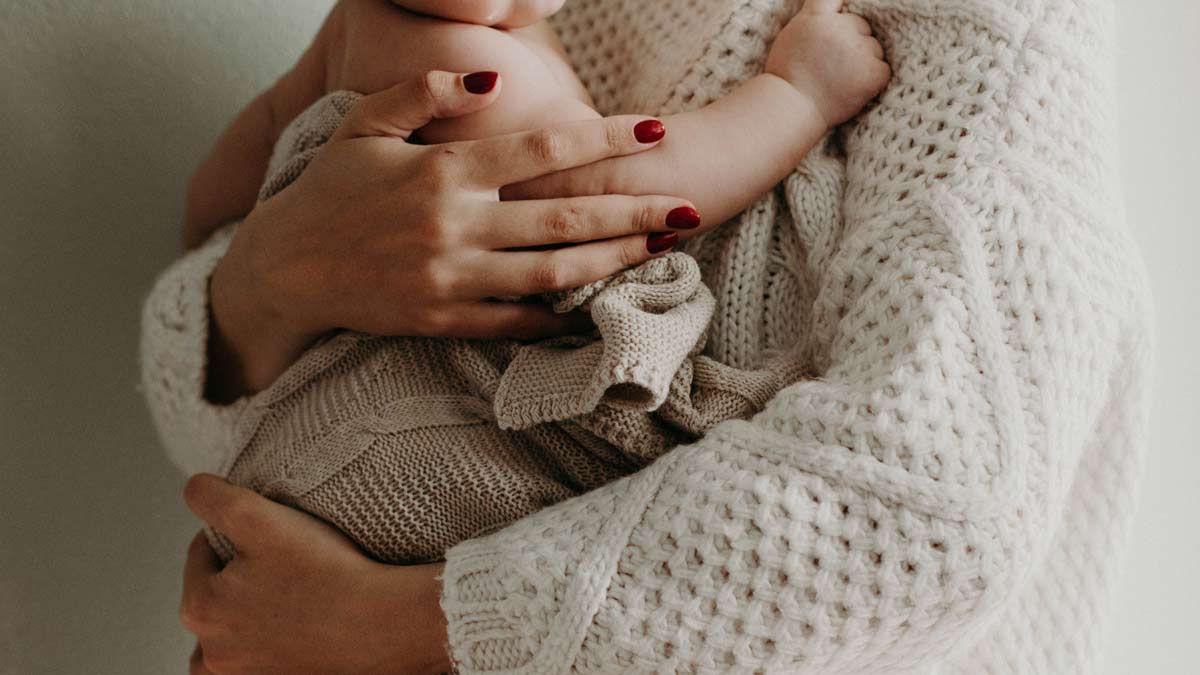
Checklist for New Baby Arrival
Written by Stacey Kelleher.
Designing a nursery is one of the most exciting parts of planning for a newborn arrival. But with so many potentially serious chemicals contained in paints, furniture, and even diapers, you’ll need plenty of practical safe baby products.
With this list of things needed for baby arrival, you’ll have everything for a peaceful transition with your littlest bundle of joy.
Choose Safe Paint & Furnishings

Creating a cozy, comfortable nursery space typically starts with the walls and furniture. Look for products paints and stains that are free of:
Biocides and Fungicides
Typically used to kill microorganisms and prevent mildew in paint and finished surfaces, these substances may contain harmful chemicals that have been linked to asthma and other respiratory illnesses.
Volatile Organic Compounds (VOCs)
These chemicals are often found in paints, varnishes, waxes, air fresheners, particle board, and dryer sheets. At a certain temperature, VOCs evaporate (known as “off-gassing”), even when the product isn’t in use. VOC exposure has been connected to respiratory irritation, loss of coordination, nervous system and liver damage, skin reactions, and nausea.
Inorganic Pigments
Paints tinted with inorganic pigments may contain questionable ingredients like calcium carbonate which can irritate the nose, throat, and lungs when inhaled. Titanium dioxide is also a common additive and is considered a possible carcinogen by the International Agency for Research on Cancer.
Opt for paints and wall coverings made with mineral and plant-based pigments.
Puracy Pick
Sherwin Williams Harmony Interior Acrylic Latex isn’t just zero-VOC and Greenguard Certified for children and schools: This product also helps remove organic household odors while providing an easy-to-clean finish.
How to Find Eco-Friendly Baby Furniture
Choose pieces constructed using real wood (and other eco-friendly materials) that both meet consumer safety standards and stand up to regular wear and tear.

Look for the Right Certifications
The “gold standard for baby mattresses and furniture, Greenguard GOLD-certified products meet stringent standards for low-VOC emissions. This certification means products are approved especially for schools, care facilities, and other places where children and seniors spend time.
From cribs to play areas, the US Consumer Product Safety Commission’s Cribs and Infant Product Page is another great place to discover the latest safety guidelines.
Check for Product Recalls
Be vigilant about checking for children product recalls on baby furniture, bedding, and toys. While retailers are generally compliant about pulling dangerous products off store shelves, that isn't as straightforward with vintage or second-hand furniture.
How to Pick Your Baby’s Crib

The average newborn sleeps around 8 hours during the day – and about 8 more hours at night. Any exhausted parent will tell you that it's not always continuous, so it's vital to create a soothing and safe crib.
1. Eco Mattresses
Look for the following features when choosing an eco baby mattress:
- Firm sleep surface, as recommended by the American Academy Pediatrics (AAP)
- Certified Organic by either Global Organic Textile Standard (GOTS) or Global Organic Latex Standard (GOLS)
- Meets flame retardant standards naturally without the use of toxic flame retardant chemicals
- Doesn't contain potentially harmful ingredients like phthalates
- Doesn't contain synthetic and/or recycled materials (including polyester)
Puracy Pick
Fashioned with GOTS Certified Organic coconut, cotton, and wool, the Emily Crib Mattress is budget-friendly and handmade in the USA.
2. Select Organic Bedding

Newborns should sleep on their backs in a designated area that’s free of loose blankets, bumper pads, toys, and other objects. You really only need a mattress cover and/or fitted crib sheet in a newborn baby’s crib.
Natural Bedding Materials
Natural fibers reduce the chances of overheating and allow your baby's skin to breathe. When it's safe to introduce sheets and blankets, continue to choose organic fabrics produced without harsh chemicals, dyes, flame retardants, and additives like wrinkle releasers.
You might pay a bit more for high-quality organic baby bedding, but natural fibers are often more durable and stand up to frequent washing.
Puracy Pick
We love Crate and Barrel’s 100% Organic Bunny Crib Sheet. The cotton material is grown in a way that’s safe for consumers, workers, and the environment.
3. Eco-Friendly Sleepsacks and Swaddles

Sleepsacks, wearable blankets, and swaddles are designed to keep babies warm and cozy while encouraging safe sleeping. Some allow infants’ arms to move freely while others are designed to keep their arms close to the body.
According to AAP guidelines, it’s safe to use swaddle blankets while the baby sleeps on their back and until they start trying to roll over. Select breathable, organic cotton products that don’t contain dyes or chemical softeners.
Puracy Pick
The 100% cotton Halo Organic SleepSack Swaddle adjusts to your baby's needs to transitioning into a wearable blanket.
Car Seats & Carriers

In a recent study on car seat chemicals, researchers at Indiana University tested a variety of newer-model products. Nearly all contained hazardous flame retardant chemicals in the foam and fabric.
Children may breathe in these chemicals as they leach off car seat surfaces, especially during warmer months or in poor-ventilated vehicles. Certain flame retardant chemicals pose serious health risks including:
- Hormone disruption
- Adverse effects on development
- Impaired neurological function
- Reproductive problems
Fortunately, many car seats meet the government’s flammability standard – without the use of harmful flame retardants. Narrow down your options by checking the following information:
- The National Highway Traffic Safety Administration (NHTSA) is the definitive resource for choosing car seats and booster seats.
- NHTSA also provides a current, searchable list of recalled child restraint seats with an email sign-up for product recall updates.
- Consumer Reports named their top baby travel systems based on ease of use and performance in crash tests (among other factors).
- Feedback from parents who have actually used car seats. Check out reviews left on online retailer pages.
Puracy Pick
In just seconds, the Doona Car Seat & Stroller Travel System transitions from a car seat to stroller without disturbing a sleeping newborn.
Eco Diapers

There are pros and cons to using both cloth and disposable diapers – a lot depends on your lifestyle and budget. Consider that babies need between 2,500 and 3,000 diaper changes in their first year alone: What makes sense for you and your growing family?
Cloth Diapers
Cloth diapers reduce substantial landfill waste and you don’t have to worry about phthalates, dioxins, and dyes found in many well-known brands.
However, cloth diapers are initially more costly and far less convenient than disposable diapers. Cleaning them can be labor-intensive (though many come with removable pad inserts that are machine washable).
Biodegradable Diapers
Even if you choose cloth items, there will inevitably be a time where it’s inconvenient or even impossible. If you’re away from home or don’t have access to a washing machine, single-use, biodegradable diapers are an excellent option.
Natural Baby Skincare
Newborn babies have extremely sensitive skin that's prone to certain conditions like acne and cradle cap. While these aren’t usually serious and tend to go away over time, gentle baby body products help reduce irritation and nourish their skin.
Puracy Organic Baby Lotion

If your newborn's skin is dry or irritated, use a small amount of lotion after bath time. Your baby lotion should be soothing, hydrating, and free of harmful ingredients.
Puracy Pick
Puracy Organic Baby Lotion contains rich, naturally-derived oils and clinical-grade vitamins to soften and protect skin.
Diaper Cream & Wipes
With frequent diaper changes, a baby’s bottom can quickly become red and irritated. Prevent diaper-area discomfort by using fragrance-free diapers and changing soiled diapers as quickly as possible.
Avoid creams and wipes that contain dyes and synthetic fragrances. Reach for plant-based baby products that use naturally-derived oils and extracts which help heal and protect skin.
Puracy Pick
Earth Mama Organic Diaper Balm uses beeswax and organic herbs and oils to comfort skin and retain its natural moisture. $11
Puracy Baby Shampoo and Body Wash

Sulfates are used in many commercial soaps and bubble baths to create suds and foam, but those bubbles can be far more irritating than soothing. Our Natural Baby Shampoo and Body Wash is clinically proven to cleanse without over-drying skin (or irritating cradle cap).
Baby Feeding Products

If your newborn isn’t sleeping, they’re probably eating. Whether they’re breastfeeding, bottle-feeding, or a combination of the two, consider adding these baby products to your routine.
Eco Friendly Baby Bottles
Bisphenol A (BPA) is used in countless plastic baby goods. This chemical leaks into foods and drinks – and that risk increases when containers are heated.
This is concerning due to BPA’s links to serious health problems including:
- Male and female infertility
- Early puberty
- Reproductive system tumors
- Metabolic disorders
Choose BPA-free plastic bottles and glass bottles. It may take some trial and error, but a wide variety of sizes and shapes will help find the right fit.
Puracy Pick
Dr. Brown’s BPA-Free Glass Bottles help to reduce gas and colic, making mealtime happier for parents and babies.
Natural Dish Soaps

Make sure your bottlewashing methods are just as green. You’ll never have to worry about unsafe soap residue left behind on bottles or sippy cups, since Puracy Natural Dish Soap is free of:
Baby Clothing

Take it from a parent: Keep your newborn's wardrobe simple for the first few weeks. Clothing that's easy to put on and simple to take off will make life much easier – especially during midnight feedings.
Selecting the Right Materials
Synthetic fibers are often made with PVC and petrochemicals (which can cause overheating and skin irritation).
Eco-friendly baby clothing has become softer, more durable, and more affordable than ever. Look for organic fabrics like cotton, hemp, bamboo, and wool that are grown without pesticides and fertilizers.
Choosing Eco-Conscious Brands
Consider how and where your baby clothing is produced. Next, choose brands that offer fair wages while practicing ethical labor practices. Visit the Global Organic Textile Standard public database to find brands that meet these standards.
Consider Secondhand Clothes

First-time parents will be shocked at how quickly a baby outgrows their clothes.You might only get one or two wears out of that super-cute onesie. Incredible hand-me-downs can be found from friends, neighbors, online marketplaces, and local thrift stores.
Reusing baby clothes saves on resources, and when you’re done, pass on any clothes to friends, family, or parents in need (just be sure to thoroughly wash baby clothes first).
Use Natural Stain Remover and Laundry Detergent

First-time parents will be shocked at how quickly a baby outgrows their clothes.You might only get one or two wears out of that super-cute onesie. Incredible hand-me-downs can be found from friends, neighbors, online marketplaces, and local thrift stores.
Reusing baby clothes saves on resources, and when you’re done, pass on any clothes to friends, family, or parents in need (just be sure to thoroughly wash baby clothes first).
Use Natural Stain Remover and Laundry Detergent

From ammonia to sulfuric acid, many surface cleaners have the potential to cause seriously negative issues. From spit-up on rockers to messes on changing tables, Puracy Natural Surface Cleaner has been tried and tested for safe use on your home's non-porous surfaces.
From Our Family to Yours
Yes, your newborn needs a lot of “stuff” but creating a green nursery can be fun, easy, and even affordable! Use our newborn checklist as a starting point to explore new and innovative sustainable baby products.



























